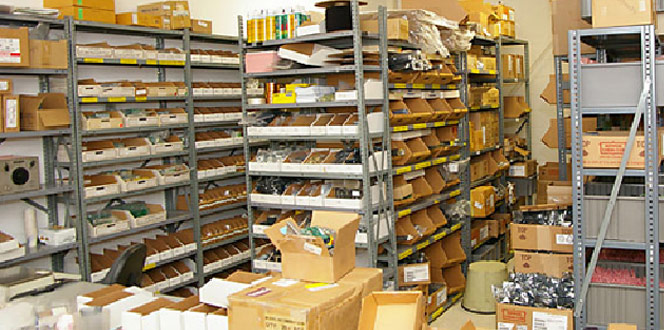The food supply chains have become global networks with complex pathways interlinking the farms to consumers and involve steps starting from the production, followed by processing and distribution. The consumers’ expectation of round the year availability of fresh food products has increased the need to manage the supply chain of fresh produce and optimising the distribution system has become a priority for organisations dealing in the delivery of groceries and fresh food to customers.
There are quite a lot of factors that come into play while organisations decide upon their optimal routing for distributing food products (both fresh and groceries) or facility locations. The optimal route and facility locations are usually aimed at minimising the total cost of delivery comprising transportation cost, deterioration cost and energy cost (in cold chain transportation). Transportation time is another factor that needs to be minimised in the case of the transport of fresh food products and perishables. Due to an increasing demand of “freshness” and “safety” in the food products, (online) grocery businesses are shifting their focus towards reducing the transportation/ delivery time of fresh produce while keeping one eye on the cost. Other factors that come into play can be the cost and tax structure in a country. Taking an example of India, the introduction of GST has led to shifting of strategies of many logistics companies. The facility locations, such as decisions regarding setting up (or leasing) central warehouses and distribution centres depend on the tax structure of a state since taxes have an impact on the final earnings of the business.
Deliver to India: Opportunity in disguise
Various startups are unleashing the potential of technology. To provide luxurious services to the customers. The fundamental problem often faced in the supply chain is to overcome the perishability of these food articles.
- Brick & Mortar store presence: The presence of highly fragile and perishable products, higher demand for a lower price, varying tastes and preferences of the customers has always demanded a more service-oriented kind of delivery model. Reliance Fresh is one of them which also operates through its website www. reliancefreshdirect.com. Unlike Big Basket, Reliance Fresh Direct has its offline stores which help to keep its asset and inventory holding cost low. This also helps in minimising the wastage losses for them as walk-in customers can purchase from their offline stores at a discounted Reliance Fresh uses pre-negotiated contracts with the suppliers to procure most of its groceries. By sourcing directly from the suppliers, they effectively weed out the middlemen interventions, lateral commissions, transportation and handling costs, wastages etc.

- Efficient Inventory management: Grofers at the beginning was following marketplace model and has recently shifted to the warehouse-based The marketplace model is like an aggregator site, wherein multiple sellers and their products are listed, and the buyers can browse through, select and order their required item from any specific store. In some instances, the onus to deliver the final product lies with the seller, and in some cases, the aggregator or the marketplace owner provides this facility. The unique selling proposition for Grofers when it was using the marketplace model was it had a delivery time of 90 mins which none of the competitors could match. BigBasket launched Express Delivery as a response to this strategy. Earlier, when Grofers was a 100% market-based model, the customer would select the items they want from their nearby or preferred shop. Grofers did not have to incur the inventory management/holding cost under this model.

- Incrementing the bargaining power of consumers: Rising consumer awareness over prices and different products based on search facilities and price comparison websites means that the power of buyers in this sector is increased. The penetration of e-commerce continues to grow through internet penetration, and digital literacy, with a shift in consumers’ habits as online shopping, is comparatively easier, convenient, and price competitive. The expansion of e-commerce has not only favoured online retailers, but it has also enhanced the backward integration of consumers as sellers against retailers. Most suppliers may sell their products to several different retailers, but the loss of revenue from a huge player could significantly affect a supplier’s revenue, while the reliance of retailers on any supplier is reduced. Notably, suppliers of delivery services have strong bargaining power, as third-party logistics services are indispensable for smaller companies; only large retailers have their in-house delivery service.

- Dependence on Analytics: Earlier in February 2018, BigBasket, India’s largest E-grocer, received USD 300 million in funding from China’s E-Commerce giant, Alibaba. This investment was expedited at a time when the competition is set to heat with the entry of Flipkart and Amazon in the grocery Amazon opened its doors for grocery in June 2016 with the Amazon Prime Now starting from Bengaluru. In 2017 it expanded this service to three new metropolitans- Delhi, Hyderabad and Mumbai. Amazon has also launched Pantry in more than 40 cities. BigBasket’s supply chain efficiency and delivery system are attributed to its strong dependence on customer analytics which is its key strength. This has helped the firm to restrict its inventory write-offs to 0.5% of gross revenue which include products going bad, damage, expiry and theft. According to Financial Express, this is higher than most online grocery retailers where the average is 8-10%.
The way ahead
The penetration of online shopping in India, regarding potential consumers (internet users), is on the rise. Growth in the number of new online shoppers is increasing; however, for most of the population, particularly regarding rural areas, this is less likely. The steady growth of the disposable income of Indian households will increase internet penetration, as well as the engagement of Indian consumers in online shopping with regards to purchasing frequency. In many countries trade regulations have been adjusted accordingly to incorporate online retail sales, including the execution of e-transactions, consumer protection, privacy protection, and anti-cybercrime laws. Finally, innovation at the suppliers of packaging material inputs that comprise a large part of overheads can also reduce the transaction cost while retaining the freshness of food article.
***************************************

